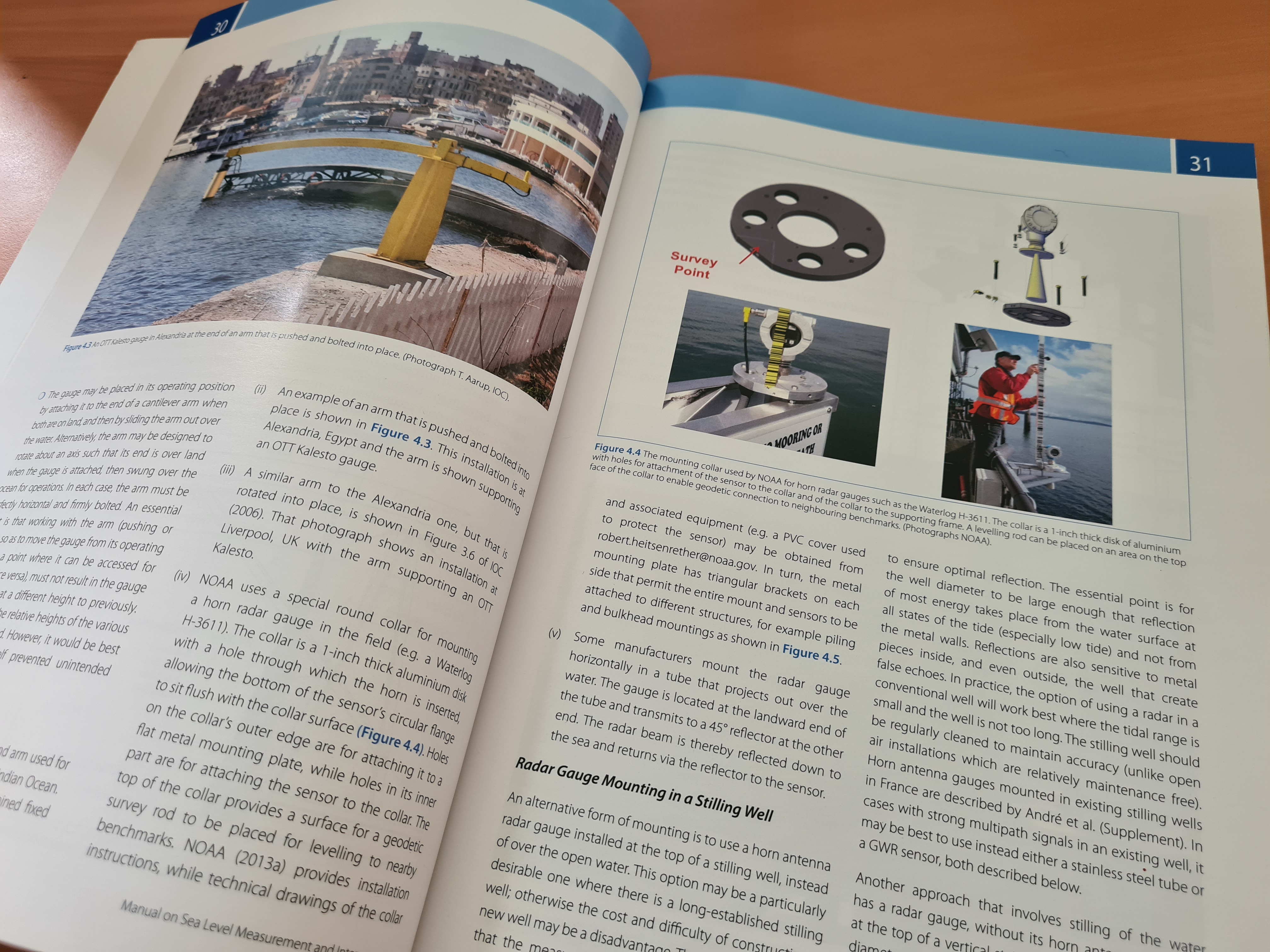
Filtrer les publications
Atmospheric Wind and Pressure-Driven Changes in Tidal Characteristics over the Northwestern European Shelf
Understanding drivers of tidal change is a key challenge in predicting coastal floods in the next century. Whilst interactions between tides and atmospheric surges have been studied, the effects of wind and pressure on tides on an annual scale over the Northwestern European shelf have not been investigated. Here, a modelling approach using the shallow water MARS model is carried out to understand and quantify meteorological effects on tidal characteristics. The model setup is validated against the GESLA 3 tide gauge database.
J. Challis, D. Idier, G. Wöppelmann, G. André
Journal of Marine Science and Engineering
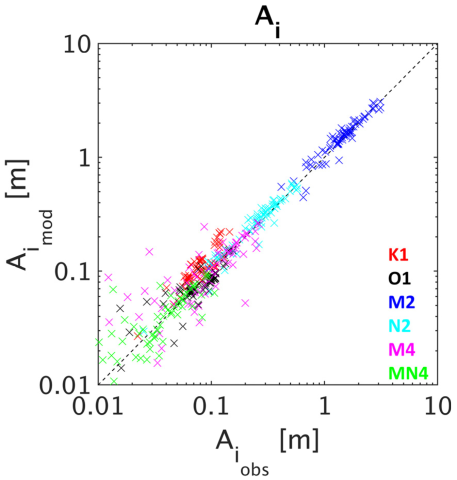
Nouméa: a new multi-mission calibration and validation site for past and future altimetry missions?
Today, monitoring the evolution of sea level in coastal areas is of importance, since almost 11 % of the world's population lives in low-lying areas. Reducing uncertainties in sea level estimates requires a better understanding of both altimetry measurements and local sea level dynamics. In New Caledonia, the Nouméa lagoon is an example of this challenge, as altimetry, coastal tide gauge, and vertical land motions from global navigation satellite systems (GNSSs) do not provide consistent information.
C. Chupin, V. Ballu, L. Testut, Y.-T. Tranchant, J. Aucan
EGU

Barotropic and baroclinic tides increase primary production on the Northwest European Shelf
High biological productivity and the efficient export of carbon-enriched subsurface waters to the open ocean via the continental shelf pump mechanism make mid-latitude continental shelves like the northwest European shelf (NWES) significant sinks for atmospheric CO2. Tidal forcing, as one of the regionally dominant physical forcing mechanisms, regulates the mixing-stratification status of the water column that acts as a major control for biological productivity on the NWES.
J. Kossack, M. Mathis, U. Daewel, Y. J. Zhang, C. Schrum
Frontiers in Marine Science
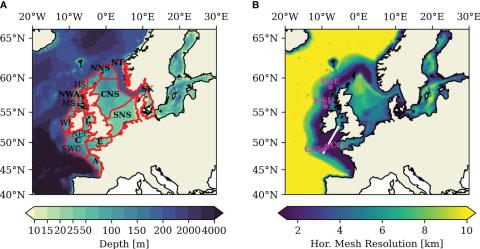
Negative sea level anomalies with extreme low tides in the South-West Indian Ocean shape Reunion Island’s fringing coral reef flats
Among induced mass-mortality events on coral reef, extreme low tides may ultimately lead to considerable reef community deaths on intertidal reef flats due to unusually long and significant aerial exposure. Here, we report an extensive coral mortality event induced by a negative sea level anomaly (nSLA) that occurred across Reunion Island during the austral winter season between June and October 2015 preceding the 2015–2016 El Niño Southern Oscillation (ENSO) event. The nSLA was strong and long in duration with a rapid drop of 35 cm in the mean sea level over a one-month period.
L. Hoarau, P. Mouquet, M. Ropert, A. Cuvillier, L. Massé, S. Bonhommeau, L. Bigot, B. Cauvin, K. Pothin, T. Bajjouk
Ecological Indicators, volume 154
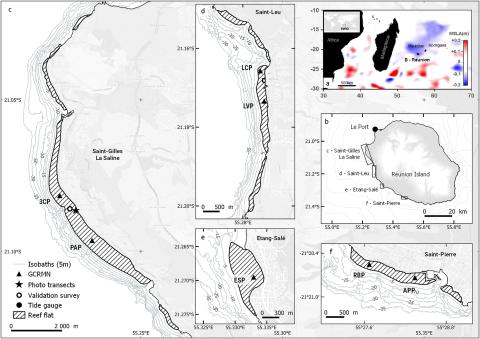
Les observatoires marégraphiques de Marseille et Brest labellisés par l'Organisation météorologique mondiale
Le 19e Congrès de l’Organisation météorologique mondiale (OMM) se tenait à Genève du 22 mai au 2 juin. Confirmant la reconnaissance de l’UNESCO, les marégraphes de Brest et de Marseille ont été labellisés par l’OMM comme stations d'observation marine centenaires et stations d’observation à long terme.
IGN - Shom
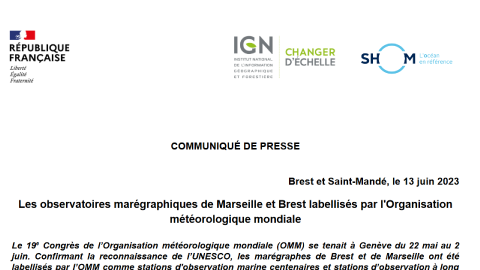
Observational study of the heterogeneous global meteotsunami generated after the Hunga Tonga–Hunga Ha'apai Volcano eruption
The Hunga Tonga–Hunga Ha’apai volcano eruption of January 15th 2022 generated a global atmospheric and oceanic response that was recorded by an unprecedented amount of sensors. The eruption caused an atmospheric perturbation that travelled as a Lamb wave surrounding the Earth at least 3 times, and was recorded by hundreds of barographs worldwide. The atmospheric wave showed complex patterns of amplitude and spectral energy content, although most of the energy was concentrated in the band (2–120 min).
J. Villalonga, À. Amores, S. Monserrat, M. Marcos, D. Gomis, G. Jordà
Scientific Reports

Multi-GNSS Combination Multipath Reflectometry Based on IVMD Method for Sea Level Retrieval
Sea level monitoring is particularly important in coastal areas that are vulnerable to marine disasters. It was recently demonstrated that the global navigation satellite system multipath reflectometry (GNSS-MR) technique, which uses multipath signals reflected from the sea, can be applied to determine the sea level. However, this approach does not provide sufficient accuracy or equally spaced sampling to meet the actual sea level monitoring requirements for certain stations.
R. Li, Y. Wen, X. Wang, H. Xu
Remote Sensing
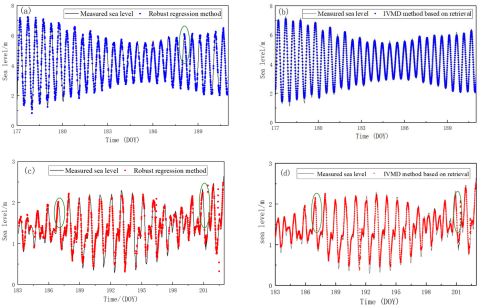
Impact of an exceptional winter flood on benthic oxygen and nutrient fluxes in a temperate macrotidal estuary: Potential consequences on summer deoxygenation
Despite 20 years of control on eutrophication, episodes of summer hypoxia still occur in the Loire estuary, impacting water quality and posing a key scientific and management challenge. This work aimed to quantify the contribution of the benthic compartment to hypoxia in the Loire estuary by direct measurement of water–sediment fluxes and an in-depth understanding of the seasonal variations of oxides and phosphorus stocks.
V. Hulot, E. Metzger, A. Thibault de Chanvalon, A. Mouret, S. Schmidt, B. Deflandre, S. Rigaud, E. Beneteau, N. Savoye, P. Souchu, Y. Le Merrer, G. M. Maillet
Frontiers in Marine Science

Water-level changes and subsidence rates along the East Sea coastline of the Saigon-Dong Nai River Estuary and the Mekong Delta
Southeast Asian deltas are highly threatened areas for flooding as a response to the combined effects of natural compaction and subsidence exacerbated by human impacts, e.g. oil, gas and water extraction, retention of sediment discharge due to river damming and sand mining, land use changes, sea-level rise and storm-induced water-level setup. Tide-induced water-level fluctuations on different time- and spatial scales, seasonal variations of freshwater runoff and sea-level setup can amplify the impact of sea-level rise and of storm surges on the coastal environment and its inhabitants.
T. C. Nguyen, K. Schwarzer, K. Ricklefs
Estuarine, Coastal and Shelf Science, volume 283
